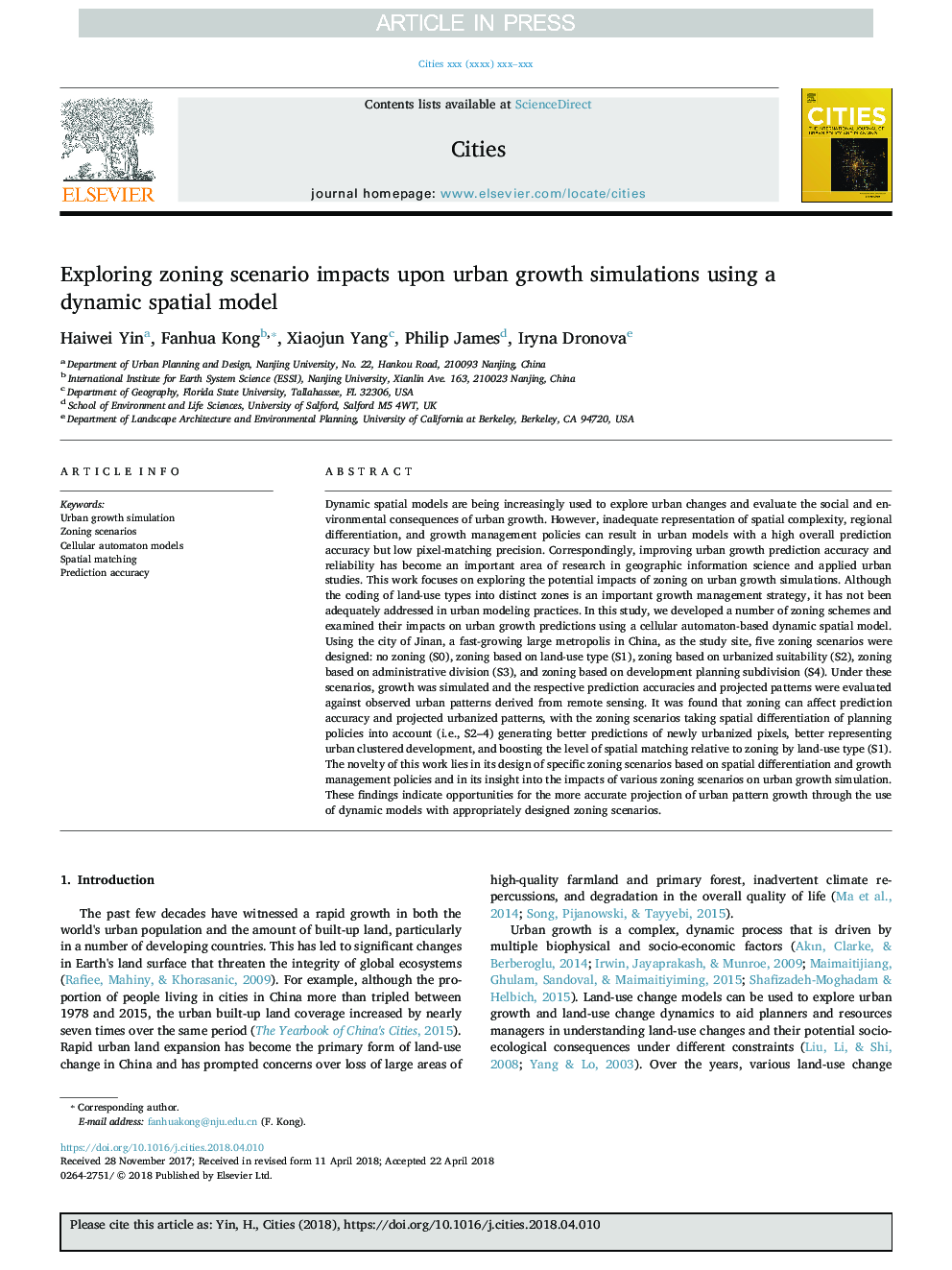| کد مقاله | کد نشریه | سال انتشار | مقاله انگلیسی | نسخه تمام متن |
|---|---|---|---|---|
| 8954670 | 1646031 | 2018 | 16 صفحه PDF | دانلود رایگان |
عنوان انگلیسی مقاله ISI
Exploring zoning scenario impacts upon urban growth simulations using a dynamic spatial model
ترجمه فارسی عنوان
بررسی سناریوهای تقسیم بندی بر روی شبیه سازی رشد شهری با استفاده از یک مدل فضایی پویا
دانلود مقاله + سفارش ترجمه
دانلود مقاله ISI انگلیسی
رایگان برای ایرانیان
کلمات کلیدی
شبیه سازی رشد شهری، سناریوهای زون مدل های سلولی سلولی تطبیق فضایی، دقت پیش بینی،
موضوعات مرتبط
علوم انسانی و اجتماعی
مدیریت، کسب و کار و حسابداری
گردشگری، اوقات فراغت و مدیریت هتلداری
چکیده انگلیسی
Dynamic spatial models are being increasingly used to explore urban changes and evaluate the social and environmental consequences of urban growth. However, inadequate representation of spatial complexity, regional differentiation, and growth management policies can result in urban models with a high overall prediction accuracy but low pixel-matching precision. Correspondingly, improving urban growth prediction accuracy and reliability has become an important area of research in geographic information science and applied urban studies. This work focuses on exploring the potential impacts of zoning on urban growth simulations. Although the coding of land-use types into distinct zones is an important growth management strategy, it has not been adequately addressed in urban modeling practices. In this study, we developed a number of zoning schemes and examined their impacts on urban growth predictions using a cellular automaton-based dynamic spatial model. Using the city of Jinan, a fast-growing large metropolis in China, as the study site, five zoning scenarios were designed: no zoning (S0), zoning based on land-use type (S1), zoning based on urbanized suitability (S2), zoning based on administrative division (S3), and zoning based on development planning subdivision (S4). Under these scenarios, growth was simulated and the respective prediction accuracies and projected patterns were evaluated against observed urban patterns derived from remote sensing. It was found that zoning can affect prediction accuracy and projected urbanized patterns, with the zoning scenarios taking spatial differentiation of planning policies into account (i.e., S2-4) generating better predictions of newly urbanized pixels, better representing urban clustered development, and boosting the level of spatial matching relative to zoning by land-use type (S1). The novelty of this work lies in its design of specific zoning scenarios based on spatial differentiation and growth management policies and in its insight into the impacts of various zoning scenarios on urban growth simulation. These findings indicate opportunities for the more accurate projection of urban pattern growth through the use of dynamic models with appropriately designed zoning scenarios.
ناشر
Database: Elsevier - ScienceDirect (ساینس دایرکت)
Journal: Cities - Volume 81, November 2018, Pages 214-229
Journal: Cities - Volume 81, November 2018, Pages 214-229
نویسندگان
Haiwei Yin, Fanhua Kong, Xiaojun Yang, Philip James, Iryna Dronova,
